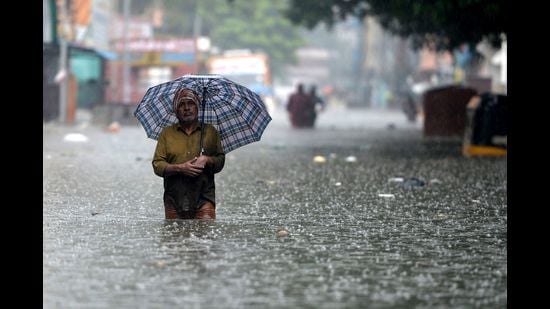How adaptation can serve the cause of climate justice
The past decade has been the hottest in recorded history. Building capacities for robust adaptation action will help the poor cope better
At the Glasgow summit, besides announcing India’s new commitments, Prime Minister Narendra Modi spoke of the importance of adaptation. The race to resilience is now in stride with the race to (net)-zero.

The past decade has been the hottest in recorded history with the spotlight on mitigation of greenhouse gases. The most vulnerable are the smallholders, pastoralists, forest-dwellers, fisherfolk and coastal communities. It is unfair that those who are least responsible for global warming are bearing the brunt of its adverse impact. Building capacities for robust adaptation action will help the poor cope better.
Adaptation must be central to India’s development goals. Four areas merit attention.
One, having an overarching mechanism that can encompass and holistically guide the dispersed and piecemeal development initiatives presently treated as a proxy for adaptation. A range of initiatives are being implemented under the National Action Plan for Climate Change by several ministries through their budgets. The schemes comprising strong adaptation components include the National Sustainable Agriculture Mission, a Sub-Mission on Agroforestry, crop diversification programmes, Systems of Rice Intensification, Zero-based Natural Farming, the National Initiative on Climate Resilient Agriculture, Pradhan Mantri Krishi Sinchai Yojana, safety net programmes such as the Mahatma Gandhi National Rural Employment Guarantee Scheme (MGNREGS), and crop and livestock insurance.
Ministries and agencies implementing these schemes, while pursuing their individual goals, are unable to assess and report the collective adaptation impact. The need is for an umbrella institution in the nature of a National Commission on Adaptation to synergise and capture the adaptation outcomes in the government’s development initiatives, to steer policies conducive to mobilising climate finance both globally and nationally, and through the public and private sectors.
Two, climate finance. It appears that climate finance for adaptation, on the scale required, will need to flow largely from domestic sources. For the period 2015 to 2030, India’s adaptation funds requirement will, estimatedly, be of the order of $206 billion in agriculture, forestry, fisheries infrastructure, water resources and ecosystems, not including disaster management. International finance for adaptation is limited. The Green Climate Fund has funded four projects in India amounting to $315 million, of which adaptation accounts for less than 25%.
A dedicated National Adaptation Fund for Climate Change (NAFCC) was set up in 2015 with an initial funding of ₹350 crore. The budget allocation declined in subsequent years. The 30 projects funded in the domains of resilient agriculture, forestry, coastal management, livestock and water, have been in the nature of pilot projects, about one per state. In its present format, NAFCC is unlikely to be able to bring any of these projects to scale for a major impact. The Fund needs revisiting.
Three, quantification and measurement of adaptation impacts. Adaptation must count in the lives of vulnerable communities. Quantifying adaptation is a challenge. Unlike mitigation, there is no single universal indicator or set of indicators to capture the adaptation happening at the ground level. The assumption is that mainstream development programmes with adaptation components automatically build resilience, reduce vulnerability and lower climate risks for the resource-poor. An appropriate metric based on global best practices is needed for quantifying and measuring adaptation effectiveness to enable prioritisation and scaling up of initiatives. Assessment of community resilience through vulnerability indices could be a starting point. Furthermore, an adaptation-centric monitoring and evaluation system is needed as the usual tools deployed for appraising centrally-sponsored schemes are not fine-tuned to evaluate adaptation impacts.
And finally, the promotion of employment and income programmes such as MGNREGS, which not only deliver livelihood gains but also co-benefit adaptation and mitigation. Nature-based activities undertaken in the scheme such as soil and water conservation, drought- and flood-proofing or afforestation produce both adaptation and mitigation benefits. Programmes for agroforestry and sustainable rice cultivation build resilience and foster synergies between adaptation and mitigation. These need to be strengthened.
In a world that will continue to warm, the poor in developing countries will unjustifiably suffer its worst consequences. Adaptation to the climate crisis will serve the cause of climate justice.
Rita Sharma is former secretary, ministry of rural development. She has also served as secretary, National Advisory Council; board member, World Agroforestry Centre and International Rice Research Institute
The views expressed are personal
All Access.
One Subscription.
Get 360° coverage—from daily headlines
to 100 year archives.



HT App & Website







